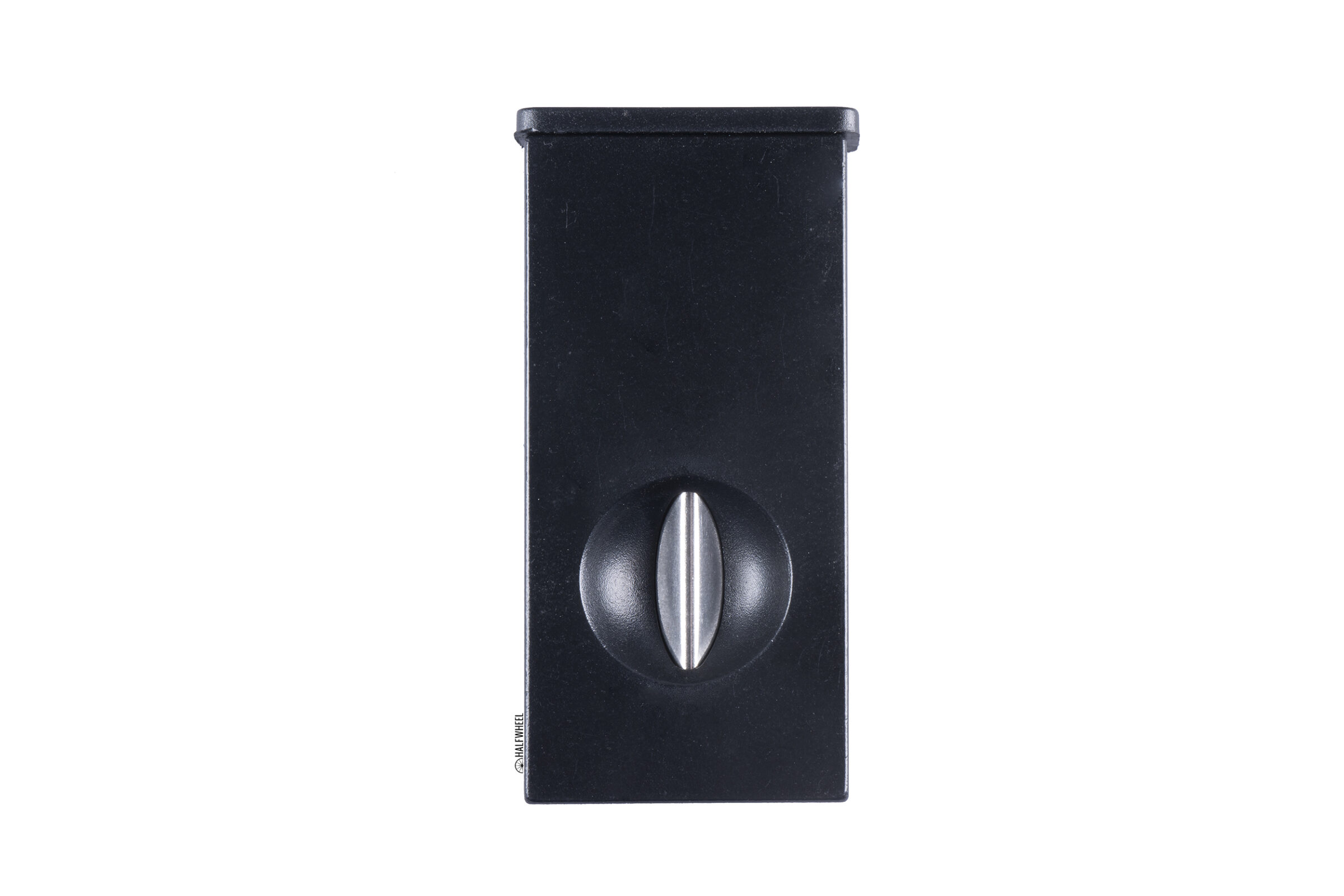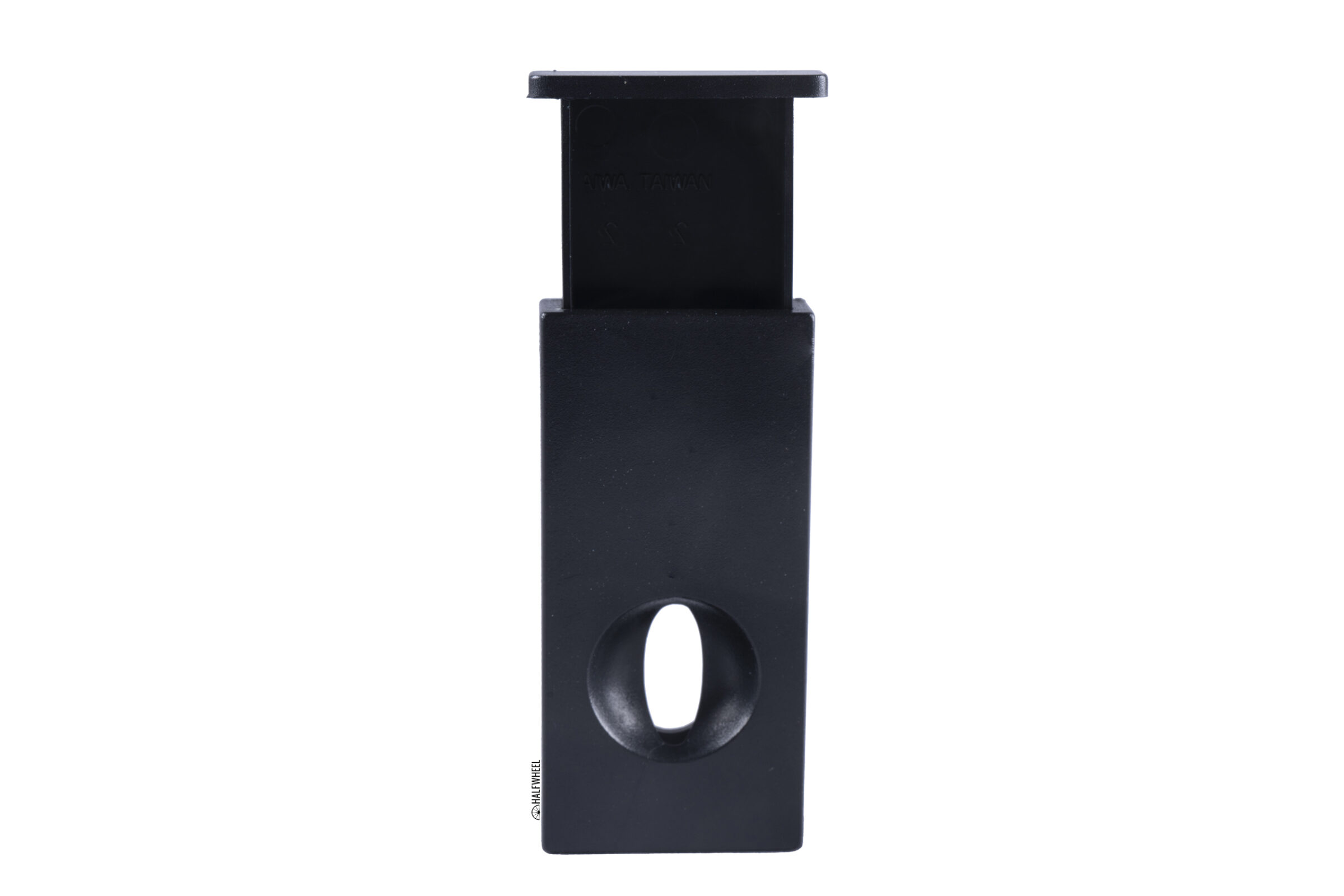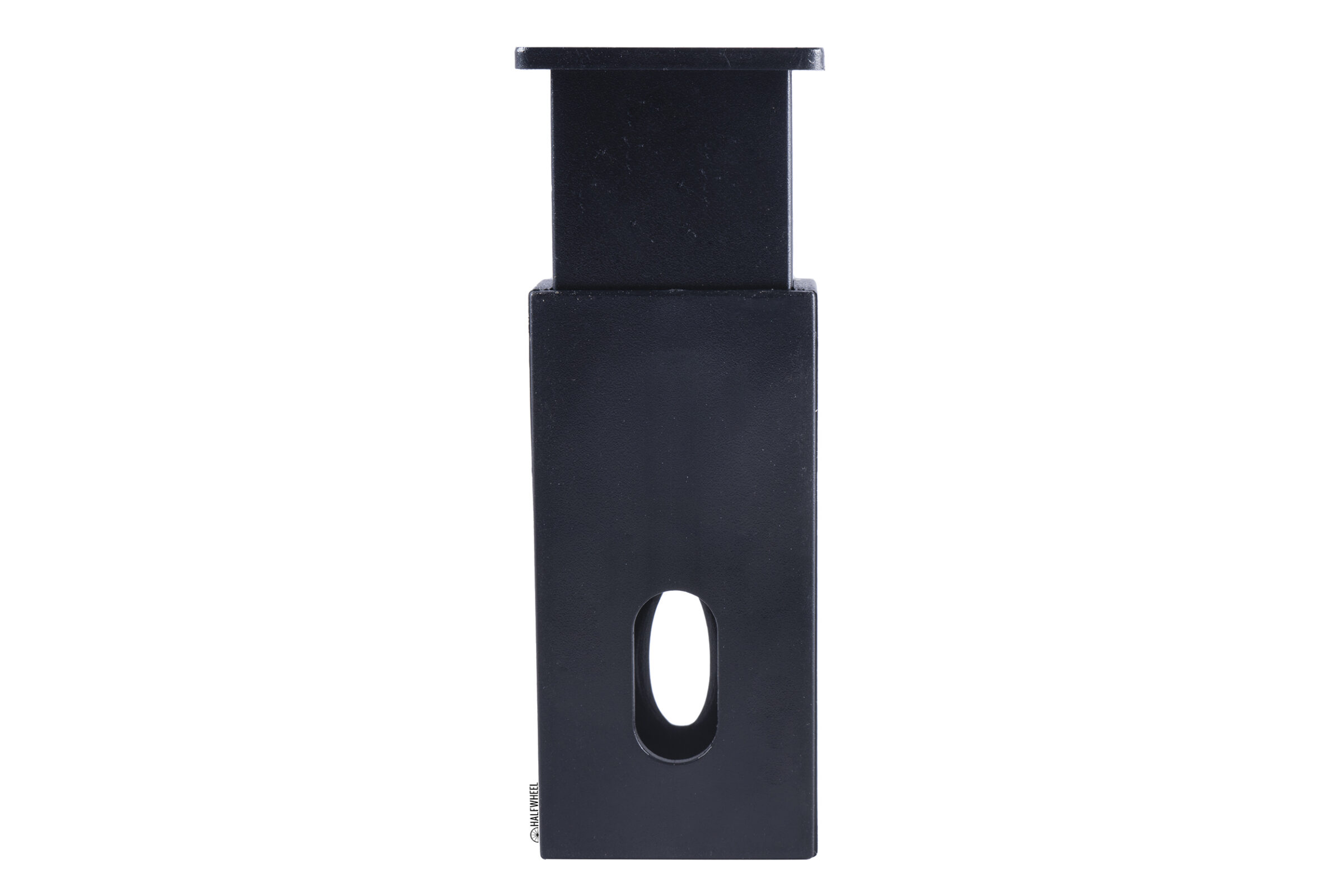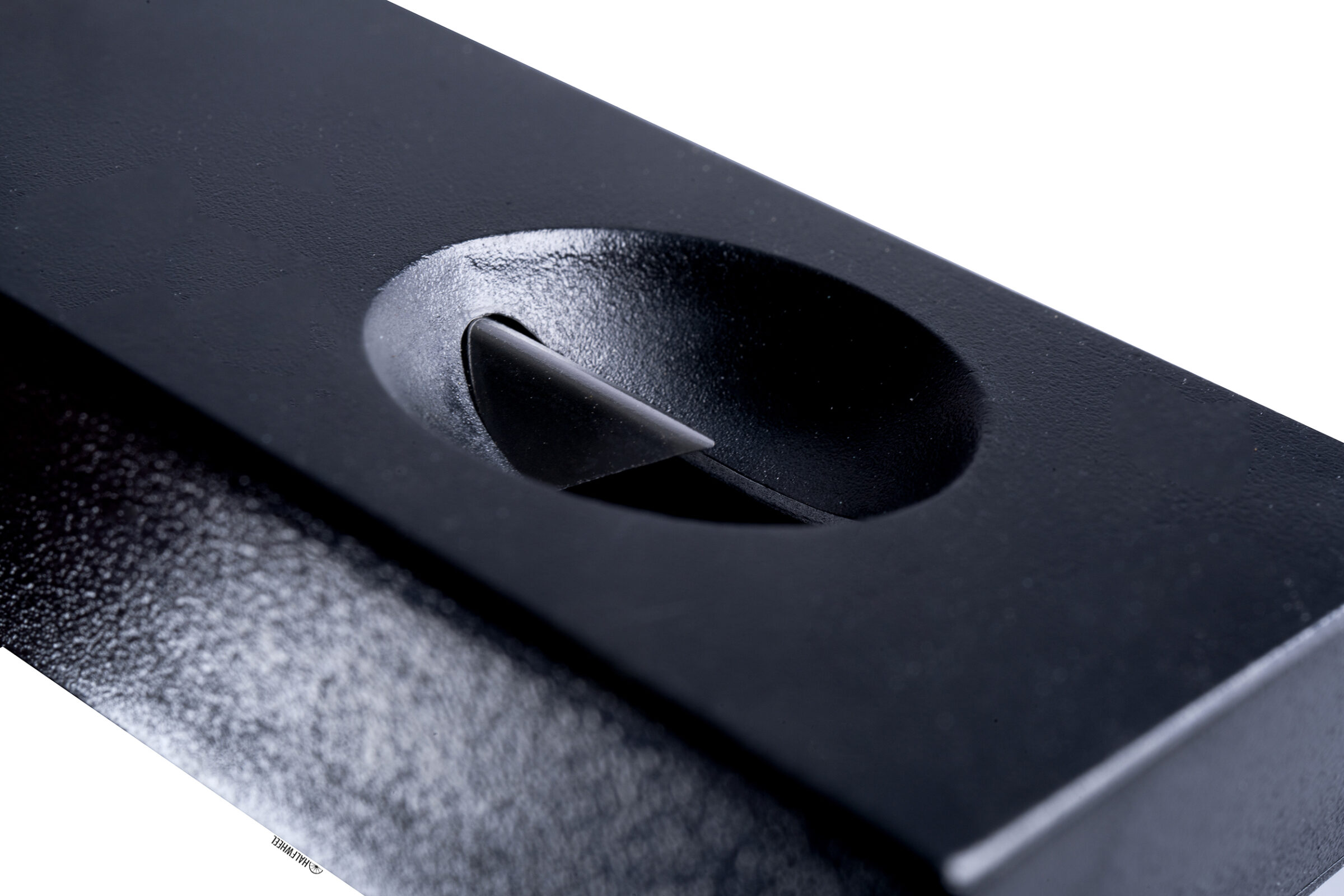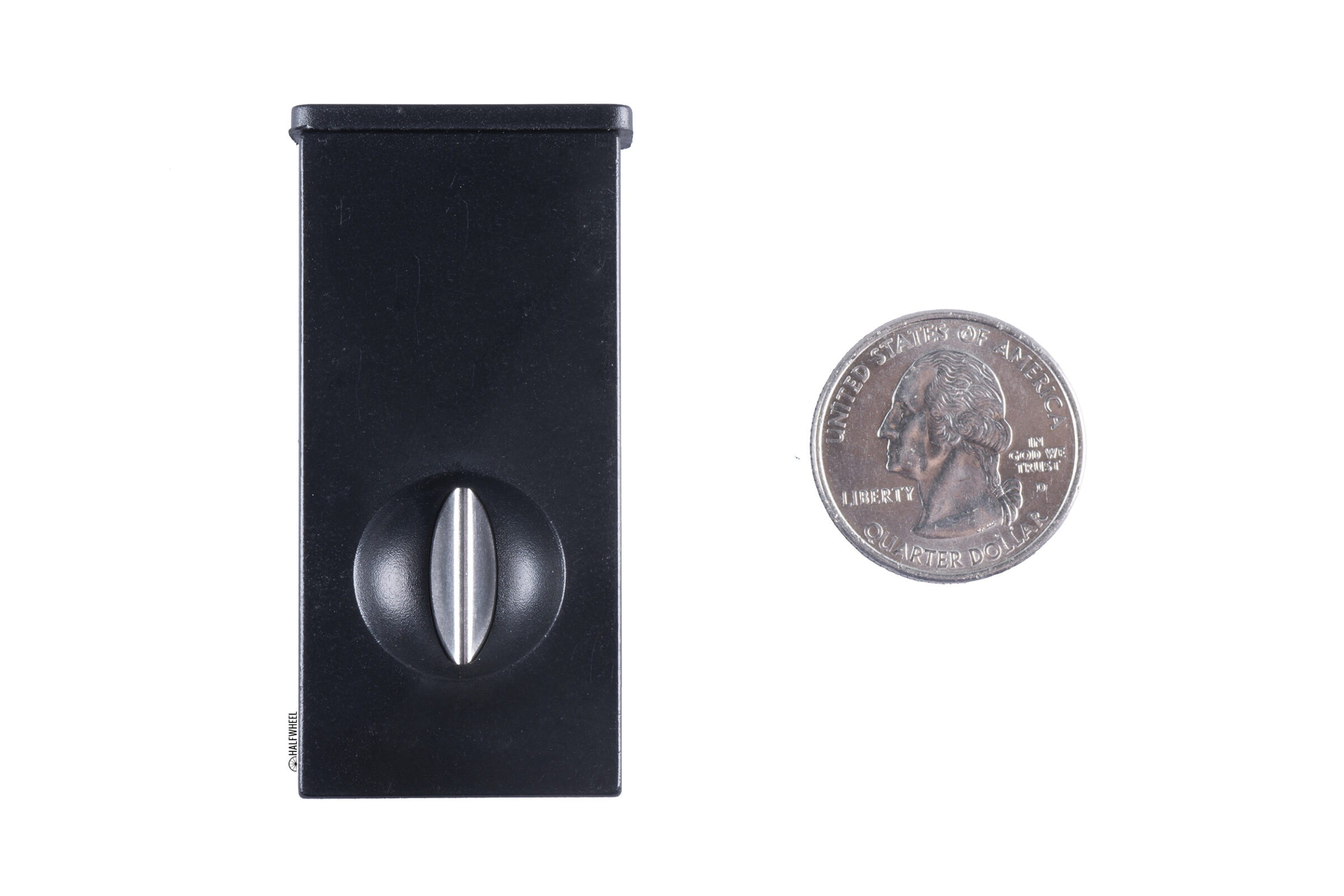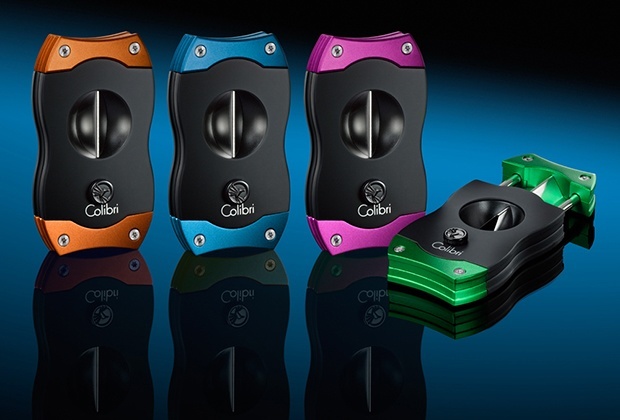Available from a host of different online retailers, the Black 1-Finger V-Cutter is a small and light v-cutter designed with a single blade that is capable of cutting cigars up to about 56-ring gauge cigars.
It’s not new, this is not an updated model, it doesn’t have some special feature—but it is unique in one very simple way.
Yes, we paid 50 cents for it.
WHAT IS IT?
As mentioned above, the Black 1-Finger V-Cutter is made with a single blade. Many new v-cutter designs utilize the reverse v-cut method, where the sides of the “V” blade are the first to touch the cigar on the outside areas and the middle of the blade is the last to piece to finish the cut. However, the tip of the Black 1-Finger V-Cutter’s triangular-shaped blade penetrates the cap from the center of the cigar before the sides of the blade follow suit.
Physically, Black 1-Finger V-Cutter weighs just .5 ounces while measuring 1.6 inches high and .35 inches thick, with a total length of 1.6 inches when closed and 1.95 inches when fully open. The cutter features a stainless steel blade encased in a body that is made of simple plastic, and both sides of the cutter are connected to each other, so it is not possible to separate them.
HOW MUCH DOES IT COST?
You can find the cutter sold for as little as 50 cents each.
HOW DOES IT WORK?
From the first time I picked this cutter up, it was obvious that it is designed and built around one main theme: making the product as inexpensive as possible. The cutter is small in stature—smaller than I expected when I saw a photograph of it online—and is made of two sections: the top section includes the opening where the cap is placed and the blade, while the bottom section features an open reservoir, presumably included to hold the pieces of tobacco that result after the cap is cut.
Actually cutting a cigar is an extremely simple process: after picking up the cutter, the user pulls open the section on the right that the blade is attached to, which has a small lip to make it easier to grasp. Pulling that section outwards causes the blade to retreat into the body of the cutter, which in turn opens up the hole where the cigar goes.
The cap of the cigar is then placed in the inverted dome opening and the section of the cutter that includes the blade is pushed closed again in an extremely laborious motion that forces the actual blade itself through the cap of the cigar. As the blade cuts through the cap and comes to the end of its journey, there is no audible click or any other audible signal that the process is complete, although there is a point where the cutter is completely closed and you cannot continue to push any further.
I am right-handed, and I found that the best way for me to hold the cutter in the open position was to have the end closest to the hole rest against my middle finger, leaving my index finger free to add balance and support for the cutting process by resting against the middle of the base of the cutter. I then used my thumb to push the section that the blade is attached to inward to cut the cigar.
THE GOOD
- The Price — At 50 cents each—we bought 10 of them for a total of $5 for this review—it is a tempting choice to buy multiples of this cutter and throw one anywhere you think you might need a cutter in a pinch. At that price point, you could have one of these cutters in every conceivable location, that you might need one for less than what a Starbucks latte costs.
- The Weight — This cutter weighs so little that I was easily able to carry it around in the front pocket of my shirt without even noticing it. In fact, there were multiple times I threw it into the pocket of my shorts or jeans and forgot it was there until I ran into it looking for my car keys.
- Easy To Procure — There are a large number of vendors that sell this cutter online, so finding one is not an issue. Having said that, I found prices that ranged from the aforementioned 50 cents each all the way up to $1.99.
THE BAD
- The Cuts Are Just Not Good — 54 of the 62 cigars (87 percent) I cut while testing the cutter had what I would describe as significant issues when it came to damage to the end of the cigar and/or jagged pieces of tobacco left sticking out.
- Everything About It Is Too Small — The body of the cutter is almost comically small, and the size of the opening that the cap of the cigar is placed in is both very small and very shallow. In addition, while the lack of any real weight is a good thing when it comes to carrying it around, that aspect also has a very real cost: because there is no heft, it is very difficult to find a balance when actually pushing the blade through the cap of the cigar you are cutting. The process is both awkward and laborious and quickly became something that I did not look forward to.
- It Is Virtually Useless For Cigars Above 56 Ring Gauge — I tried numerous times to cut cigars with ring gauges ranging from 58 to 64, all to no avail. The main issue is that the opening where the cap of the cigar is placed is just too small to allow the blade to actually cut deeply enough to give decent draws on cigars that large. Even with a 52-ring gauge cigar, the opening is small enough that the cap will not touch the deepest part of the opening. That, combined with the force that I need to apply to keep the cigar still, means that the cigar slips as the blade comes in contact with the cigar.
THE COMPETITION
Although I was unable to find another v-cutter for a price even close to 50 cents, the closest competitor I found is the Vertigo Victory V-Cutter ($2.99). Although both cutters have bodies made of plastic, the differences start with the cutting method: the Vertigo features a reverse v-cut while the Black 1-Finger V-Cutter utilizes the opposite method. With that said, other than the price, the Vertigo wins out in just about every other category: the Vertigo gave me cleaner cuts, can be used to cut cigars with larger ring gauges and is much easier to use thanks to its larger footprint.
Additional Competitors
- Craftsman’s Bench Cutter ($3.99) — This isn’t a v-cutter, but it is a $4 straight cutter that I’d actually recommend using as a cutter. Despite its $4 price, it consistently cuts cigars up to 64 ring gauge without issues.
- Craftsman’s Bench V-Cutter ($3.99) — I have not reviewed this specific cutter and so I don’t know firsthand how well this works. If it’s anything like the straight cutter, this should be a fantastic option.
- Visol Duocut 2-in-1 Cigar Cutter ($3) — This is another option with a price closer to the Black 1-Finger V-Cutter, but it includes both a straight cutter and v-cutter in one product. However, I have not yet reviewed this cutter, so I cannot tell you if it is a better cutter or not.
- XIKAR VX2 V-Cut ($54.99) — While it is heavier and obviously more expensive, the VX2 gives much cleaner cuts as well as the ability to be used on cigars up to about 64-ring gauge. I would buy this cutter over the Black 1-Finger V-Cutter with no hesitation.
- Colibri SV-Cut ($79) — The SV-Cut has the distinct advantage of featuring two very good cutters—a straight cut and a v-cut—in one portable product, albeit at a much higher cost and with significantly more weight. Although the price difference is hard to deny, this cutter outperforms the Black 1-Finger V-Cutter in every possible way.
- Lotus Jaws V-Cutter ($35) — A much cooler design, less weight and slightly better cuts are the main advantages of the Lotus over the Black 1-Finger V-Cutter, but it does cost quite a bit more. After using both this and the Black 1-Finger V-Cutter, I would put up the extra cash to spring for the Lotus.
SHOULD YOU BUY IT?
No.
With its almost forgettable price point and extremely small footprint, it would be tempting to ignore the host of other shortcomings that the Black 1-Finger V-Cutter has and use it as a backup or at a time when you don’t care if you lose it or not. Unfortunately, the cutter fails at its most basic job: cutting cigars. The cuts ranged from decent to absolutely abysmal, with the latter occurring way more than the former. While a 50-cent cigar cutter might seem like a great value, this one is a terrible value. If your 50-cent cigar cutter destroys the cap of your $10 cigar, then the cutter actually cost $10.50.



